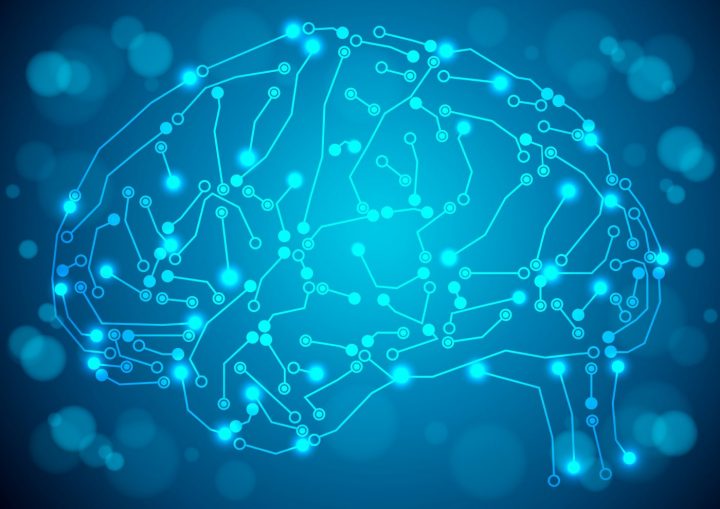Imaging Technique Finds Key Neurons in Brain Interact, May Support More Targeted Treatments

Photo by Shutterstock Music helps connections in the brain.
Two key types of brain nerves cells affected by Parkinson’s disease — cholinergic neurons and dopaminergic neurons — communicate and interact via signaling systems, researchers were able to “see” using a new imaging approach.
This beneficial neuron-to-neuron interaction, confirmed through the novel approach in a rat model of the disease, also supported further work on targeted treatments for Parkinson’s, including a potential gene therapy.
Their study, “DREADD Activation of Pedunculopontine Cholinergic Neurons Reverses Motor Deficits and Restores Striatal Dopamine Signaling in Parkinsonian Rats,” was published in Neurotherapeutics.
Parkinson’s is a progressive neurodegenerative disease, meaning that it steadily worsens as neurons die over time. One of its hallmarks is the loss of dopamine — a neurotransmitter crucial for coordinating movement and regulating mood — that occurs when dopaminergic neurons in a brain structure called the substantia nigra malfunction and die.
Cholinergic neurons — those that produce the neurotransmitter acetylcholine — are nerve cells found in the pedunculopontine nucleus (PPN) of the brain. They are also implicated in Parkinson’s, since in post mortem studies of patients’ brain tissue a significant amount of these cells are found dead.
Researchers had previously used used a harmless virus to deliver a genetic modification to cholinergic neurons in a rat model of Parkinson’s disease. This technique is called designer receptors exclusively activated by designer drugs (DREADDs), and consists of a class of engineered proteins that allow researchers to hijack cell signaling pathways in order to look at cell-to-cell interactions more easily.
The animals were then given a compound designed to activate the genetic ‘switch’ and stimulate the target neurons. After treatment, almost all animals had recovered and were able to move.
Now, this same research team used positron emission tomography (PET), a brain imaging technology, together with DREADDs to selectively activate cholinergic neurons in the brains of diseased rats and look at how other brain cells responded.
They found that stimulating cholinergic neurons led to the activation of dopaminergic neurons in the rat brain, and dopamine was released.
This means that cholinergic activation restored the damaged dopaminergic neurons. The parkinsonian rats appeared to completely recover — they were able to move without problems and their postures returned to normal.
“This is really important as it reveals more about how nerve systems in the brain interact, but also that we can successfully target two major systems which are affected by Parkinson’s disease, in a more precise manner,” Ilse Pienaar, PhD, a researcher at the University of Sussex and Imperial College London and study author, said in a press release.
“While this sort of gene therapy still needs to be tested on humans, our work can provide a solid platform for future bioengineering projects,” Pienaar added.
This new technique has several advantages over deep brain stimulation (DBS), a surgical procedure that sends electrical impulses to the brain to activate the neurons.
Deep brain stimulation can help to relieve some Parkinson’s symptoms, but is invasive and has had mixed results. Some patients show improvements while others experience no changes in symptoms or even a deterioration. This may be due to therapy imprecision, as DBS stimulates all types of brain nerve cells without a specific target.
This study sought to address the selectivity issue by looking at the activation of one type of cell in a specific part of the brain to get a better understanding of how other parts might be influenced.
“[T]he current data could allow for designing medical approaches capable of improving the ratio between desirable and undesirable outcomes and leaving nonimpaired functions intact. For example, specific genetically defined neurons … could be targeted to treat motor symptoms of [Parkinson’s], without inducing a cognitive detriment, and vice versa,” the researchers wrote.
“For the highest chance of recovery, treatments need to be focused and targeted but that requires a lot more research and understanding of exactly how Parkinson’s operates and how our nerve systems work,” Pienaar said. “Discovering that both cholinergic and dopaminergic neurons can be successfully targeted together is a big step forward.”
The researchers concluded, “[t]his study supports the hypothesis that it is the cholinergic neuronal population, projecting from the PPN, which delivers some of the clinical benefits associated with PPN-DBS.”
Pienaar and colleagues collaborated with Invicro, a precision medicine company, for this study. Lisa Wells, PhD, a study co-author on the study and Invicro employee added, “It has been an exciting journey … to combine the two technologies [DREADD and PET] to offer us a powerful molecular approach to modify neuronal signaling and measure neurotransmitter release. We can support the clinical translation of this ‘molecular switch’ … through live imaging technology.”
This work may make possible more selective and more effective treatment alternatives to deep brain stimulation.






